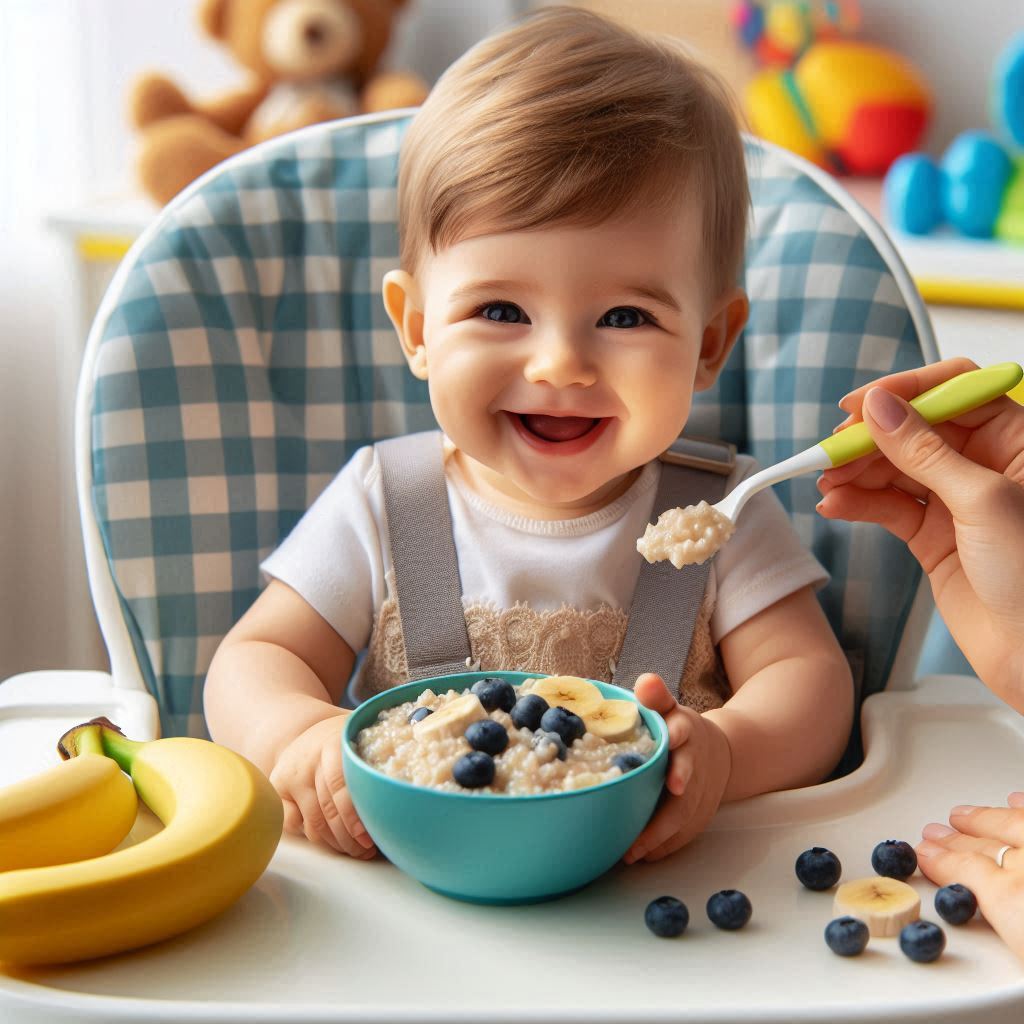Here’s a look at some of the best infant cereals available today, based on nutrient content, ingredients, and reviews from parents:

1. Gerber Single-Grain Oatmeal Baby Cereal
- Pros: Gerber’s oatmeal cereal is iron-fortified and provides essential nutrients like calcium, zinc, and vitamins C and E. It’s easy to digest, with a mild flavor that most infants enjoy. The single-grain option allows parents to identify any allergies before moving on to mixed grains.
- Cons: Contains some added vitamins, which may be unnecessary if the baby is getting enough nutrients from other sources.
2. Happy Baby Organic Oats & Quinoa Baby Cereal
- Pros: This organic cereal is made with whole-grain oats and quinoa, offering a balanced mix of protein, fiber, and iron. It’s non-GMO, contains no added sugar, and is fortified with DHA, a beneficial fatty acid for brain development.
- Cons: Slightly more expensive than other brands, but it’s a high-quality, nutritious option for parents seeking organic foods.
3. Beech-Nut Multigrain Baby Cereal
- Pros: This multigrain cereal combines oats, rice, and whole wheat, providing a good balance of nutrients from multiple grains. It’s fortified with iron and zinc and is free from artificial colors and preservatives.
- Cons: Contains rice, so it’s recommended to balance it with other grains due to arsenic concerns.
4. Earth’s Best Organic Whole Grain Oatmeal Cereal
- Pros: Earth’s Best offers organic oatmeal cereal that is iron-fortified and free from GMOs, synthetic pesticides, and artificial flavors. It provides a good amount of protein, fiber, and essential vitamins, making it an excellent choice for a nutritious first food.
- Cons: Earth’s Best cereals can be thicker in texture, so parents may need to add more breast milk or formula to thin it down initially.
5. Happy Baby Organic Brown Rice Baby Cereal
- Pros: Made with organic brown rice, this cereal is fortified with iron and free from artificial ingredients. Happy Baby’s brown rice cereal is gentle on an infant’s digestive system and is also rich in fiber.
- Cons: Since it’s rice-based, it’s essential to vary this with other cereals to avoid exposure to potential arsenic.
6. Gerber DHA & Probiotic Rice Cereal
- Pros: This rice cereal is enriched with DHA, essential for brain development, and contains probiotics to support digestive health. Gerber uses a single-grain rice base, making it easy for parents to monitor any allergic reactions.
- Cons: Although probiotics are beneficial, some babies may not need them if they’re already taking a probiotic supplement or eating probiotic-rich foods.
Tips for Choosing the Right Infant Cereal
- Check for Iron Fortification: Iron is essential for infants, especially around six months, when they need additional sources beyond breast milk or formula. Choose cereals that are iron-fortified to support healthy growth.
- Opt for Whole Grains: Whole grains contain more fiber, protein, and nutrients compared to refined grains. Look for cereals made with oats, barley, quinoa, or brown rice to ensure your baby gets a balanced intake.
- Avoid Added Sugars and Artificial Ingredients: Babies don’t need added sugar, salt, or artificial colors in their diets. Check the ingredient list to ensure the cereal is free from unnecessary additives.
- Choose Organic, If Possible: Organic cereals are free from synthetic pesticides, herbicides, and GMOs, making them a cleaner choice for your baby. However, non-organic cereals can also be a safe and affordable option if they meet other nutritional needs.
- Consider Texture and Mixing: Start with thinly mixed cereal, especially for infants just beginning solids. You can gradually thicken the consistency as your baby becomes more accustomed to eating solids.
Preparing Infant Cereal
Infant cereal is usually easy to prepare. Most cereals only require mixing with breast milk, formula, or water. Start with a small amount and mix it to a thin consistency, especially for babies new to solids. As your baby gets used to the texture, you can thicken the cereal or mix it with pureed fruits or vegetables to add flavor and nutrients.
Introducing Infant Cereal to Your Baby
When introducing infant cereal to your baby, start with one or two teaspoons at a time and increase the amount gradually. It’s recommended to introduce single-grain cereals first and wait a few days before introducing a new grain or food to monitor for allergies. Mixing the cereal with familiar flavors, like breast milk or formula, can help your baby transition smoothly to solids.
Conclusion
Infant cereals are an excellent option for introducing solids to your baby, providing essential nutrients like iron and fiber in an easy-to-digest format. By choosing whole-grain, iron-fortified, and organic options, parents can ensure they’re offering their babies a nutritious start. Remember to monitor your baby’s reaction to new foods, and consult a pediatrician if you have any concerns or need guidance on the best options for your little one. With careful selection and a gradual introduction, infant cereals can play an important role in building healthy eating habits and supporting your baby’s growth and development.
